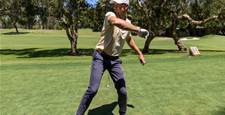Here, his long-time coach, Grant Field, reveals the key aspects of the Queenslander’s action and what you can learn from the swing that many now believe will see him capture a major title, sooner rather than later.
ADDRESS
We have always worked hard on Cam’s starting position as we want it to be in a very balanced and athletic position. From this down-the-line position we are looking for a slight knee flex, proper forward bend from the pelvis and for the arms to be able to hang naturally. Cam’s balance check point is if we were to run a straight-line down from under his arm pit past the front of his knees and through the laces on his shoes. That’s when we know he is ready to go.
HALFWAY BACK
At this early stage of the swing, Cam’s tendency is for the hands and club to want to move a little too far out from his body with the clubhead getting too far outside. Our checkpoints here are that the lead arm (left arm) is slightly inside the point of the left shoulder and the clubhead is covering the hand to just slightly outside, as you can see here. In regard to the clubface position, we are looking for it to be square to slightly open to his spine angle. When Cam hits his best shots, this is the position he finds in the backswing.
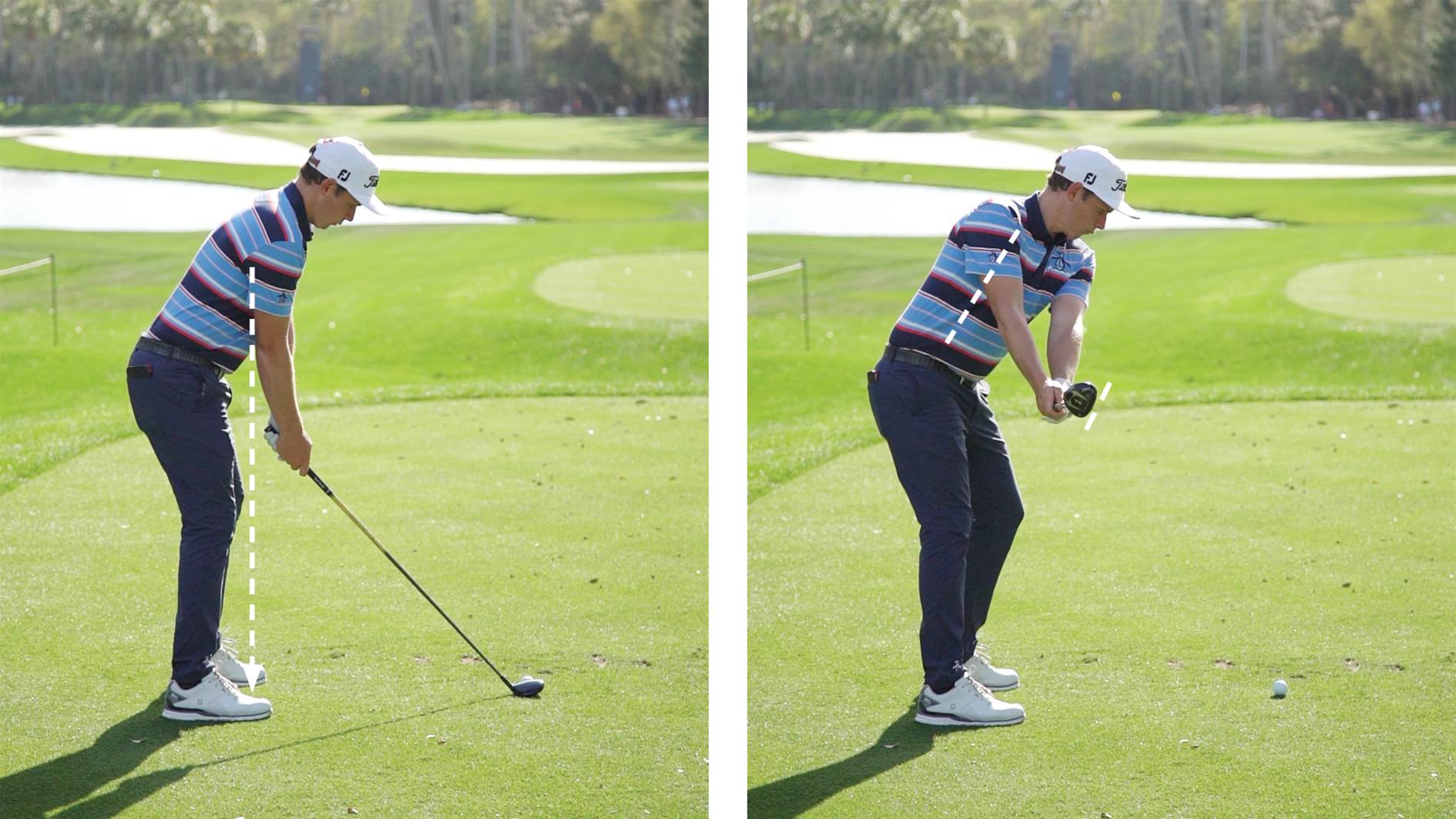
Address and Halfway Back. PHOTO: Mark Newcombe.
NEARING THE TOP
When the club reaches left arm parallel, we are looking for Cam to maintain the relationship between his rising arms and turning body. The other key thing we look at is for Cam to stay in the tilts to his body – that is his shoulder tilt and pelvic tilt – because Cam has a tendency at times to want to fractionally level out his shoulder plane.
AT THE TOP
At the top of Cam’s swing we are looking for his lead arm (left arm) to match up with – or to be just slightly above – the shoulder plane, while his left wrist should be slightly bowed or flexed. As mentioned, Cam works hard to maintain the correct arms and body relationship, as well as correct arm depth. The checkpoint we use at the top of the backswing is to see the butt of the club in a straight line above the right ankle joint. Cam has a tendency for his arms to travel too far, causing his arms and the club to get a little in behind his turning body. Ideally we want to see the club swing a little shorter, just as he is doing here.
TRANSITION
As Cam starts to move toward impact, we start to see a lowering of the body and pressure being applied into the ground. If we were looking at this picture from front-on, you would see his top half stacked onto of his bottom half, with his sternum on top of his pelvis.
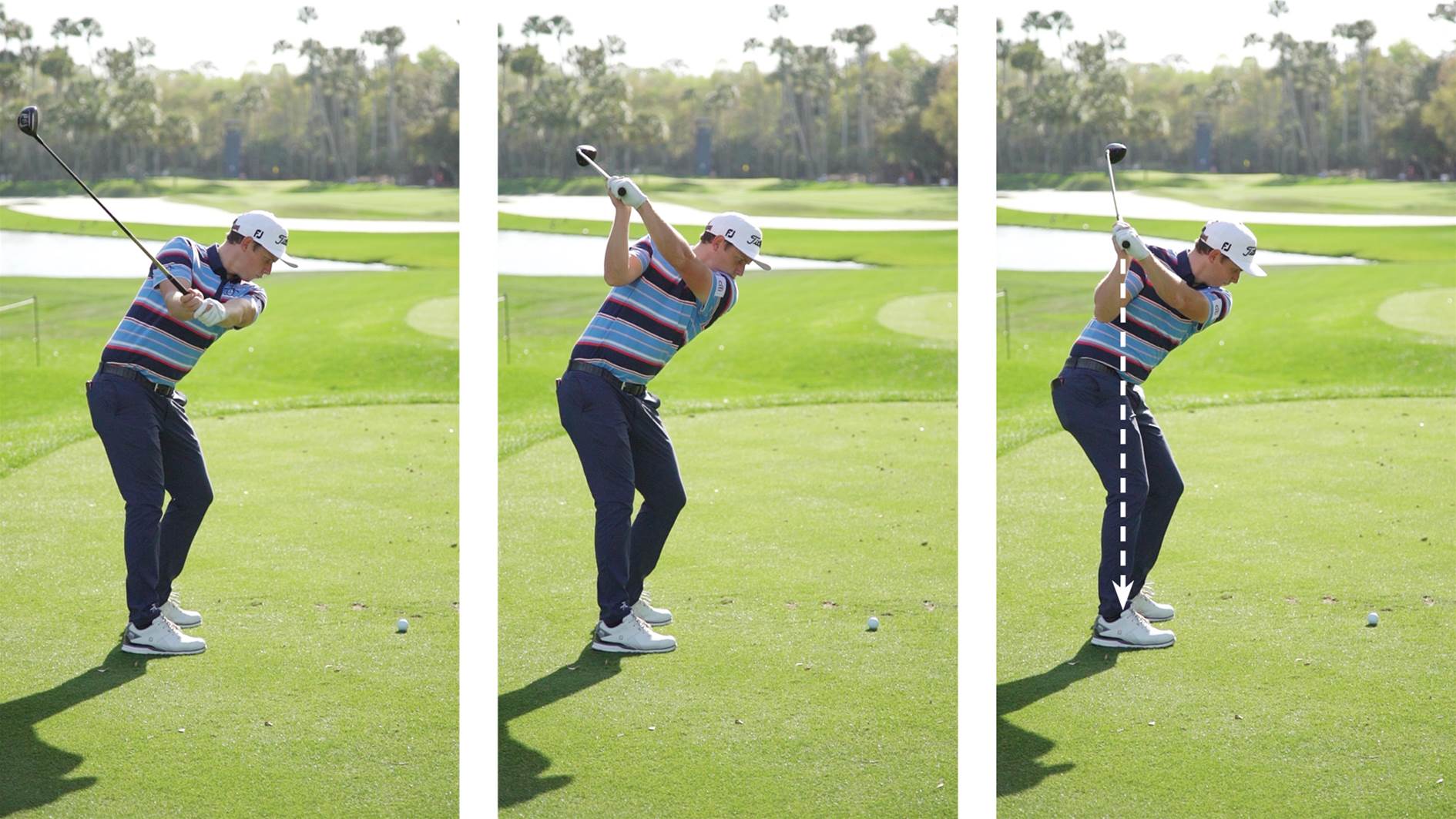
Nearing The Top, At The Top and Transition. PHOTO: Mark Newcombe.
HEADING FOR IMPACT
This is where we see Cam start to open up his body more as the club approaches impact. The club is in a really neutral on-plane position with the club shaft ideally dissecting the right bicep.
ALMOST THERE
When the club reaches parallel to the ground in the downswing, you can see the clubhead, shaft and hands are all in a line, which is parallel to his target line as set by the line across Cam’s toes. Also of note is Cam’s clubface, which is in almost the identical position to what it was in his takeaway. As someone who likes to play little fades (shots from left-to-right), this is a perfect position for Cam.
PERFECT IMPACT
This is a perfect impact position. We can see Cam’s left arm and club shaft lining up, while we can also see a bent right arm which is a common-thread for all good ball-strikers. One of the things a lot of players are told to achieve, is to get their shoulders really open at impact. But if you take a look at the lines on Cam’s shirt, you will see a great representation of what actually happens at impact. If you notice the line across his shoulders is pretty much square to fractionally open, while the lines around his rib cage are more open than the shoulders and the line of his hips or his belt line is even more open.
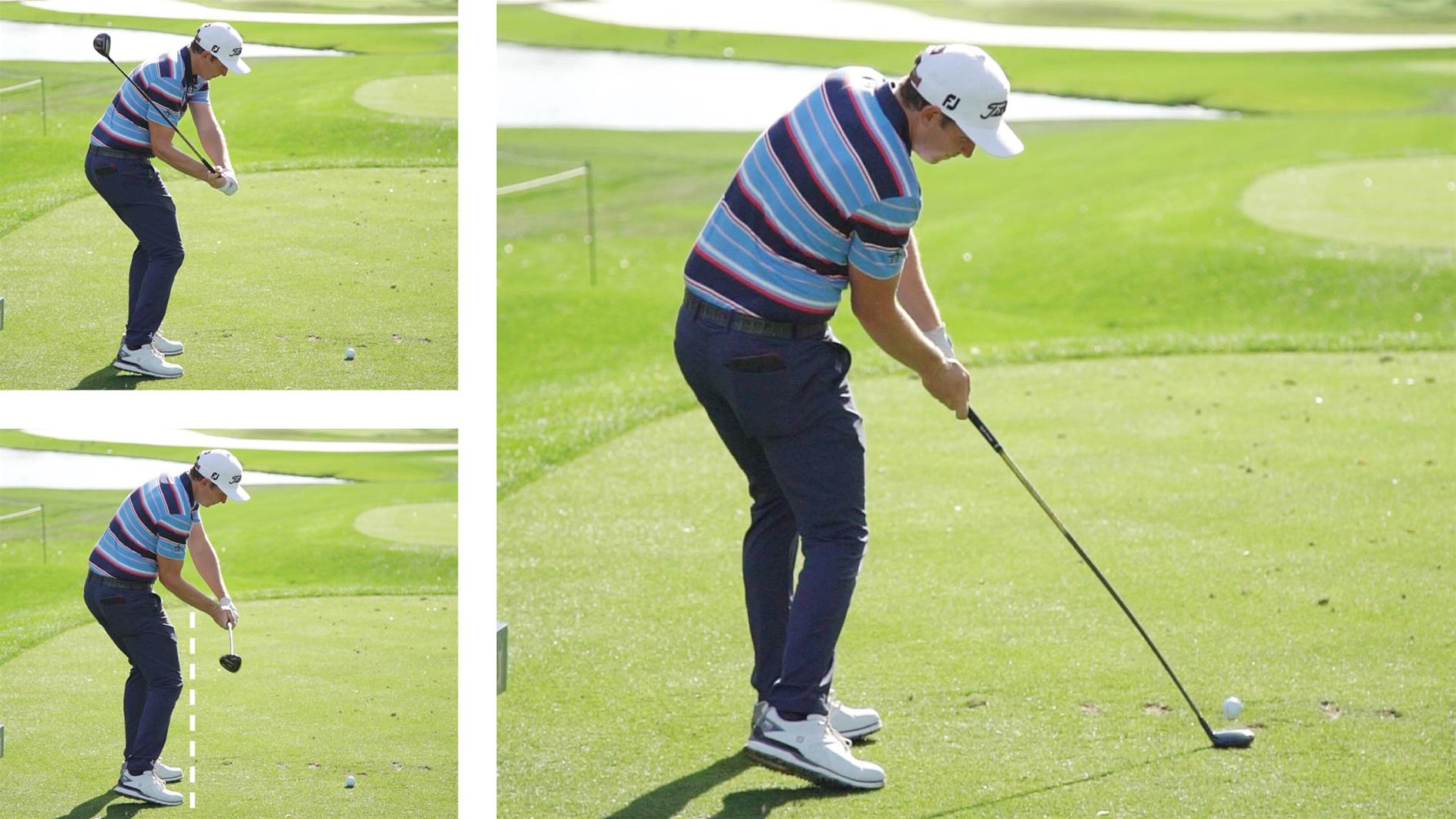
Heading For Impact, Almost There and Perfect Impact. PHOTO: Mark Newcombe.
THROUGH IMPACT
As Cam is moving through impact into his finish position, you can see, again, how he maintains great arms-body connection throughout the swing with his hands starting to disappear around his body and the club still out in front of his turning body. This is a good sign for us that he has also stayed more on ‘top of the ball’ through impact, which is a feeling Cam likes to have.
STRIKE A POSE
Cam has finished his swing in a beautiful balanced position, which is something you will see with nearly all great players. He is so balanced here that he could hold this pose for quite some time.

Through Impact and Strike A Pose. PHOTO: Mark Newcombe.
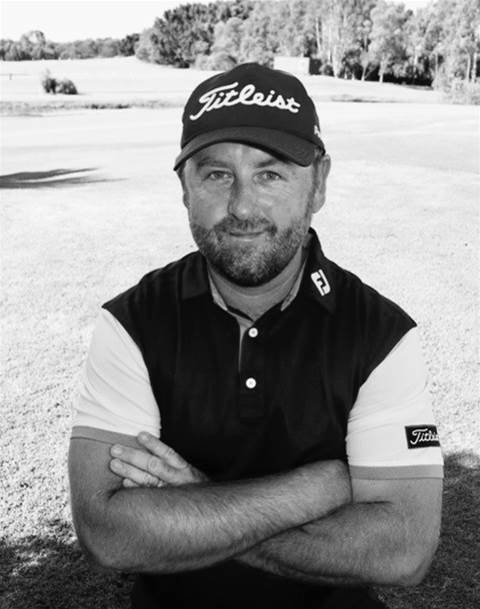 GRANT FIELD has been coaching Cameron Smith for more than a decade. He is the Director and Head of Coaching at Grant Field Golf and Australian Golf Performance Centre at Pelican Waters Golf Club in Queensland. He is a certified Australian PGA Professional and has twice been named Queensland Coach of the Year (2012 & 2018), as well as teaching pro of the year in 2012.
GRANT FIELD has been coaching Cameron Smith for more than a decade. He is the Director and Head of Coaching at Grant Field Golf and Australian Golf Performance Centre at Pelican Waters Golf Club in Queensland. He is a certified Australian PGA Professional and has twice been named Queensland Coach of the Year (2012 & 2018), as well as teaching pro of the year in 2012.
INSIDE SMITHY’S BAG
Here, we take a detailed look at the equipment Cam Smith used in his runner-up finish at the Masters.
DRIVER: Titleist TSi3 (10˚ loft), fitted with a Project X HZRDUS Smoke Yellow 60 shaft.
3-WOOD: Titleist TSi2 (15˚ loft), fitted with a UST Mamiya Elements Prototype 8F5X shaft.
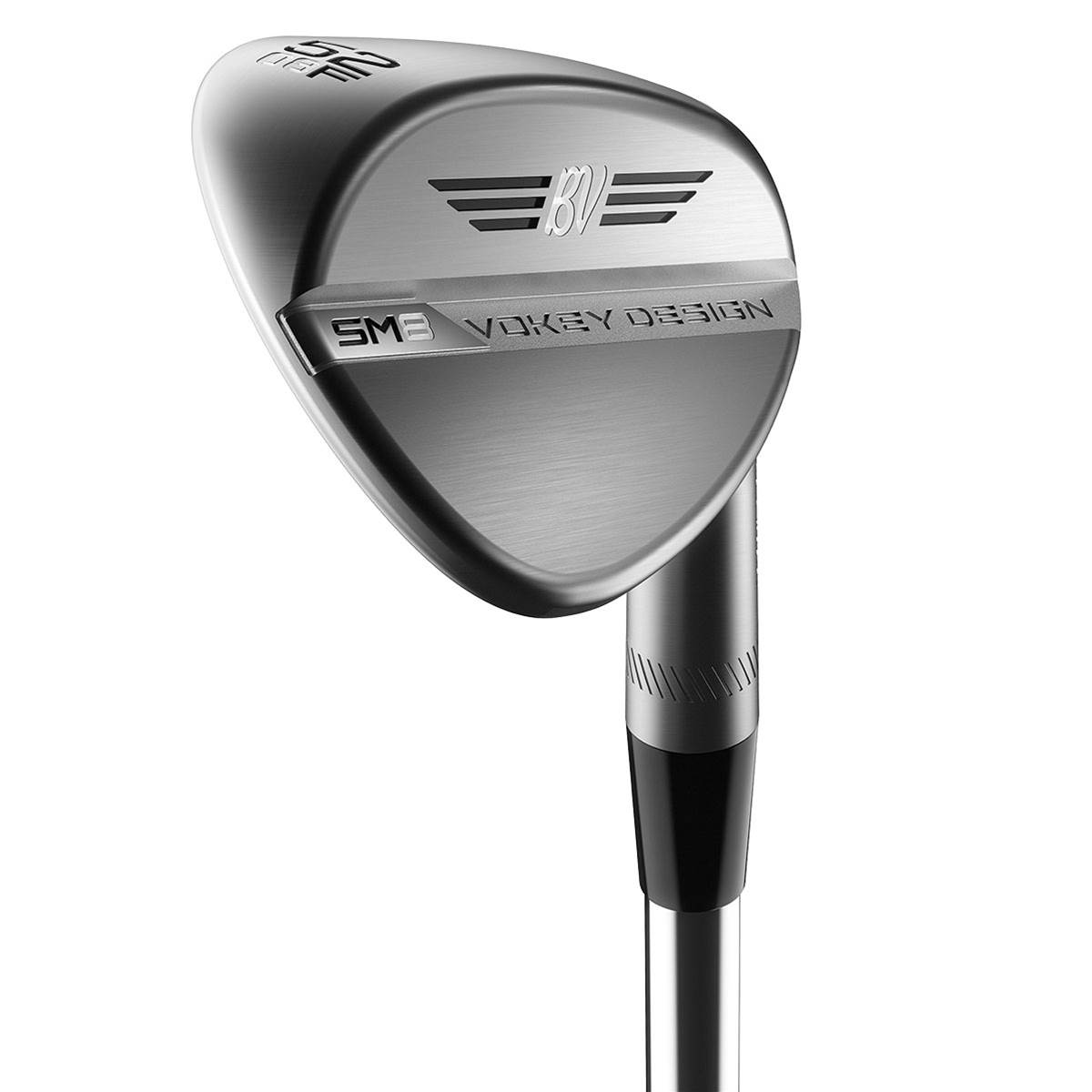
7-WOOD: Titleist TS3 (21˚ loft), fitted with a UST Mamiya Elements Prototype 8F5X shaft.
IRONS: Titleist U500 (4-iron), Titleist T100 Black (5- to 9-iron), all with KBS Tour 130 X shafts.
WEDGES: Titleist Vokey Design SM8 (46˚-10˚F, 52˚-08˚F, 56˚-08˚M and 60˚-10˚S), all with KBS Tour 130 X shafts.
PUTTER: Scotty Cameron Teryllium TFB-1.5.
BALL: Titleist Pro V1x (2021).
© Golf Australia. All rights reserved.




 GRANT FIELD has been coaching Cameron Smith for more than a decade. He is the Director and Head of Coaching at Grant Field Golf and Australian Golf Performance Centre at Pelican Waters Golf Club in Queensland. He is a certified Australian PGA Professional and has twice been named Queensland Coach of the Year (2012 & 2018), as well as teaching pro of the year in 2012.
GRANT FIELD has been coaching Cameron Smith for more than a decade. He is the Director and Head of Coaching at Grant Field Golf and Australian Golf Performance Centre at Pelican Waters Golf Club in Queensland. He is a certified Australian PGA Professional and has twice been named Queensland Coach of the Year (2012 & 2018), as well as teaching pro of the year in 2012.









